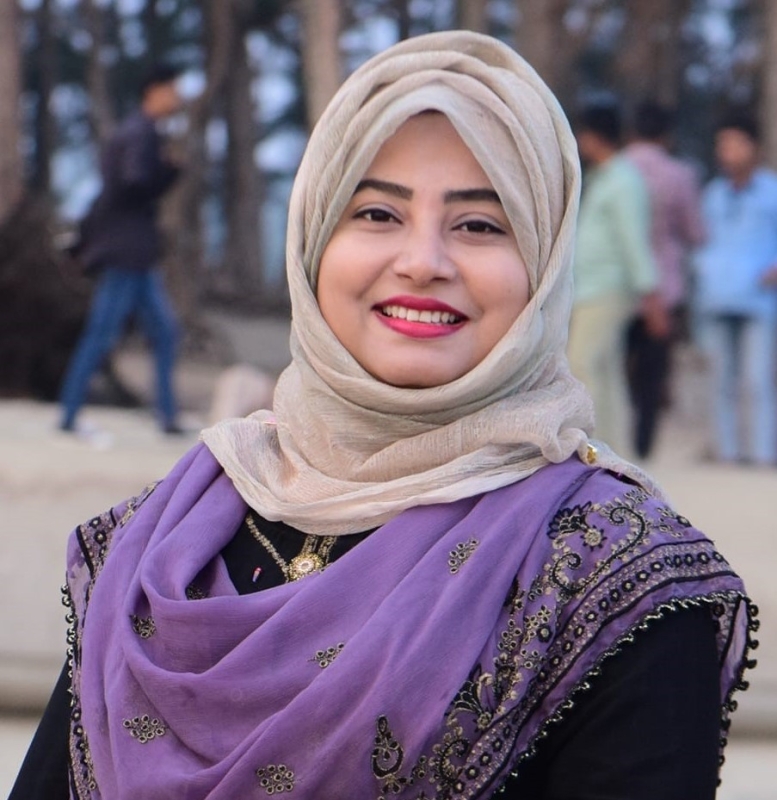- সমুদ্র থেকে লাইটার জাহাজে লাফিয়ে উঠলো ৩ মণ ইলিশ |
- AL Found Organisationally Involved in BDR Carnage: Taposh Key Coordinator |
- Trump calls Venezuelan airspace ‘closed,’ Maduro denounces ‘colonial threat’ |
- Bangladesh’s potato powerhouse status to be showcased in festival |
- Hasnat prays Khaleda Zia lives to see Sheikh Hasina executed |
Tissue Culture and Urban Agriculture for increasing Food Production

Tanzila Rahman, UAO, Ramu, Coxs Bazar
Tanzila Rahman and Prof. M Zahidul Haque
Amid escalating global pressures, enhancing agricultural and food output has emerged as a critical imperative. With the world population projected to reach nearly 10 billion by 2050, the Food and Agriculture Organization (FAO) estimates that food production must increase by 60% to meet future demand.
Bangladesh, a densely populated and climate-vulnerable country, has embraced innovative techniques like tissue culture to boost crop yields and ensure food security while Urban Agriculture is also getting popularity and contributing to enhanced food production.
Prof. M Zahidul Haque
Institutions such as the Bangladesh Agricultural Research Institute (BARI) have successfully used tissue culture to propagate disease-free banana, potato, and orchid plants, significantly improving productivity and farmer income.
Similarly, urban agriculture—such as rooftop farming in Dhaka—has gained popularity, allowing urban dwellers to grow vegetables and herbs in limited spaces. Globally, some countries including Kenya have adopted tissue culture for crops like sugarcane and cassava, while Singapore has pioneered controlled farming through high-tech urban farms that maximize space and efficiency.
These examples highlight how combining biotechnology and spatial innovation can transform agriculture, making it more resilient, productive, and accessible across diverse landscapes.
Countries like Bangladesh, where land is scarce and climate change poses severe risks, need innovative solutions to ensure food security, farmer income, and resilience. Two promising approaches—tissue culture (micro propagation) and urban agriculture (controlled farming systems such as hydroponics, aquaponics, and rooftop farming)—can play a transformative role.
Tissue Culture (Micro propagation)
Tissue culture is the invitro cultivation of plant cells, tissues, or organs under sterile conditions. It is widely applied in bananas, potatoes, sugarcane, orchids, and other highvalue crops.
How It Boosts Productivity
• Mass Propagation: Millions of identical, healthy plants can be produced quickly from a small tissue sample.
• Disease-Free Plants: Pathogen-free planting material reduces crop losses.
• Uniformity: Ensures consistent growth, yield, and quality across fields.
• Faster Breeding: Shortens breeding cycles by bypassing seed dormancy and incompatibility barriers.
• Stress Tolerance: Can be combined with biotechnology to develop drought, salinity, or pest-resistant varieties.
Example
In Bangladesh, tissue-cultured bananas and potatoes have shown 30–40% higher yields compared to conventional planting materials boosting both productivity and farmer incomes.
Urban Agriculture (Controlled Farming)
Urban agriculture encourages farming systems that spread crops across flat, controlled surfaces—such as rooftops, hydroponic beds, aquaponic tanks, or modular greenhouses. Unlike vertical farming, it maximizes underutilized horizontal spaces in urban and periurban areas.
How It Boosts Productivity
• Efficient Land Use: Utilizes rooftops, unused urban land, or periurban plots.
• Year-Round Production: Controlled environments allow continuous cropping regardless of season.
• Water Efficiency: Hydroponics and aquaponics use up to 90% less water than soil farming.
• Reduced Transport Costs: Produces food closer to consumers, cutting post-harvest losses.
• Diversification: Enables production of leafy greens, herbs, vegetables, and even fish in aquaponics systems.
Example
In Dhaka, rooftop hydroponic farms are already producing vegetables with higher yields per square meter than traditional soil farming. Singapore has pioneered similar urban farming systems, while the Netherlands has become a global leader in greenhouse-based horizontal agriculture.
Role of DAE in promoting Tissue Culture and Urban Agriculture The Department of Agricultural Extension (DAE) of Bangladesh plays a vital role in promoting tissue culture and urban agriculture to enhance food security, income generation, and sustainable farming. Through initiatives like the Tissue Culture Laboratory cum Horticulture Center Establishment and Development Project, DAE has established specialized labs and horticulture centers across the country to produce and distribute disease-free, high-yield seedlings using micro propagation techniques. These efforts are complemented by training programs for agricultural officers and farmers to ensure effective adoption. In urban agriculture, DAE promotes rooftop and vertical farming, hydroponics, and container gardening by offering technical support, awareness campaigns, and climate-resilient practices tailored to city environments. Together, these strategies aim to boost productivity, improve nutrition, and create employment opportunities while fostering eco-friendly agricultural practices.
Conclusion
Tissue culture and urban agriculture address different but complementary stages of the food production chain. Tissue culture strengthens the planting material stage, ensuring farmers start with high-quality, disease-free seedlings. Urban agriculture ensures better use of space, water, and controlled environments.
Together, they can help Bangladesh achieve higher yields, improved food security, and greater climate resilience.
(Tanzila Rahman(BCS Agri) is Upazila Agriculture Officer (UAO), Ramu, Coxs Bazar and Prof. M Zahidul Haque is an ‘Adjuncty Faculty’ in Agricultural Journalism Program at Sher-e-Bangla Agricultural University, Dhaka)

